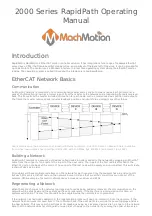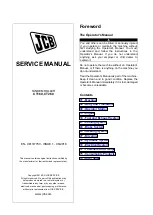
51
Herefater we outline a number of
potential problems that may occur
on the appliance and the relevant
list of actions required.
A working fault, in most cases, pro-
vocates the “lock out” signal onto
the control panel of the control
box. When this light turns on, the
burner can operate again only
after the reset button has been
pressed; if this has been done
and a regular ignition occurs, it
means the failure can be defined
momentary and not dangerous.
On the contrary, if the “lock out”
stays, the cause of the fault, as
well as the relevant action must
be made according to the follow-
ing chart:
The burner does not ignite
– Check the electric connections.
– Check the regular fuel flow, the
cleanness of the filters, of the
nozzle and air vent from the tube.
– Check the regular spark ignition
and the proper function of the
burner.
The burner ignites regularly but
the flame goes out immediately
– Check the flame detection, the air
calibration and the function of the
appliance.
Difficulty in regulating the burner
and/or lack of yield
– Check: the regular flow of fuel, the
cleanness of the boiler, the non
obstruction of the smoke duct, the
real input supplied by the burner
and its cleanness (dust).
The boiler gets dirty easily
–
Check the burner regulator
(smoke analysis), the fuel quan-
tity, the flue obstruction and the
cleanness of the air duct of the
burner (dust).
The boiler does not heat up
– Control the cleanness of the shell,
the matching, the adjustment, the
burner performances, the pre-
adjusted temperature, the correct
function and position of the regu-
lation stat.
– Make sure that the boiler is suffi-
ciently powerful for the appliance.
Smell of unburnt products
– Control the cleanness of the boiler
shell and the flue, the airtight-
ness of the boiler and of the flue
ducts (door, combustion chamber,
smoke ducts, flue, washers).
– Control the quality of the fuel.
Frequent intervention of the boiler
shutoff valve
– Control the presence of air in the
system, the function of the circu-
lation pumps.
– Check the load pressure of the
appliance, the efficiency of the
expansion tanks and the valve
calibration.
3.4 ANTIFREEZE PROTECTION
In freezing weather, make sure that
the heating system continues to fun-
ction and that the rooms are kept
warm enough, including the room in
which the boiler is installed; if this
cannot be done, both the boiler and
the heating system must be comple-
tely emptied.
Completely emptying the system
also means emptying the hot water
tank and the hot water heating coil.
3.5
USER WARNINGS
When faults occur and/or the equip-
ment does not operate correctly,
turn it off, without attempting to
make any repairs or take direct
action. For any operation only con-
tact the authorised technical per-
sonnel in your area.
ATTENTION: It is mandatory that the
dedicated power cable is replaced
only with a spare cable ordered and
connected by professionally quali-
fied personnel.
3.6 DISPOSAL OF THE EQUIPMENT
(2012/19/UE)
Once it reaches the end of its opera-
ting life, the equipment
MUST BE RECYCLED in
line with current legisla-
tion.
IT MUST NOT be disposed
of together with urban
waste.
It can be handed over to recycling cen-
tres, if there are any, or to retailers
that offer this service.
Recycling prevents potential damage
to the environment and health. It al-
lows to recover a number of recyclable
materials, with considerable savings
in terms of money and energy.
3.7
HIGH EFFICIENCY PUMP
(fig. 10)
Press the button (4) briefly (about 1 sec-
ond) to select the pump operating mode.
The relative LEDs will indicate each time
the adjustment mode (2) and the charac-
teristic curves set (3).
Point 3.7.4 reports the possible combi-
nations and their meaning.
When the LED (1) signals a fault, the
pump stops and attempts to run restart
cycles. If the fault is solved, the pump re-
starts automatically.
3.7.1 Venting the pump
The pump venting function is activated
by pressing the button (4) for a long time
(3 seconds) and vents automatically.
3.7.2 Factory settings
The factory setting is activated by press-
ing and holding the button (4) and disa-
bling the pump. When the pump is re-
started, it will work with factory settings
(delivery state).
3.7.3 Manual restart
When a lockout is detected, the pump
tries to start automatically. If the pump
does not restart, restart manually by
pressing the button (4) for a long time
(5 seconds), then release it. The restart
function is activated for a maximum of 10
minutes.
After the restart, the LED indication
shows the previously set values.
If the fault persists, replace the pump.
1
2
3
4
Fig. 10






































